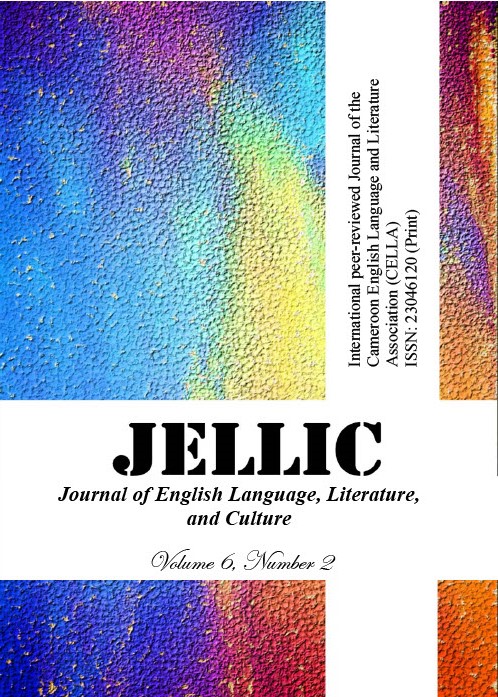The Dynamics of Eco-Equity in Ayang Frederick’s Green Hills and Bole Butake’s Lake God
Keywords:
Dynamics, Eco-Equity, Ecosphere, Botanical , AnthropocentricAbstract
Equating the value of plants to that of animals as part of the ecosystem is a grievous error. It makes eco-policymakers invest equal efforts, and resources on both floral and faunal elements, oblivious of the fact that ecological coexistence is not synonymous with eco-equity. The centrality of the botanical part as what other members of the ecosphere depend on is therefore not considered. This eco-psychological imbalance leads to wastage of resources and time on other things rather than on the botanical part whose deterioration has had the trickle-down effect felt today. This paper projects the botanical element as the most superior member of the ecosphere deserving of more attention as projected in Ayang Frederick’s Green Hills and Bole Butake’s Lake God. The ecocultural perspective, deep ecology and cultural ecology are used to prove the hierarchy of ecological elements. This establishes the indispensability of plant life to the life of animals including man, through their interaction in the texts under study. We find out at the end of the paper that the relationship of plant and animal life to man could be represented in layers with the fauna components revealing their fundamentality as far as the survival of living things in general is concerned. These circles indicate that policy makers should master the interrelationship between ecological elements and target the improvement of primary producers on whom food chains and food webs grossly depend. This is because if the plant sector of the ecosphere is improved, the rest of the environment will follow suit.
Published
Issue
Section
License
Copyright (c) 2024 Henry Akem M. Egbe, Eugine Wirsiy Sahfan (Author)

This work is licensed under a Creative Commons Attribution-NonCommercial-NoDerivatives 4.0 International License.




